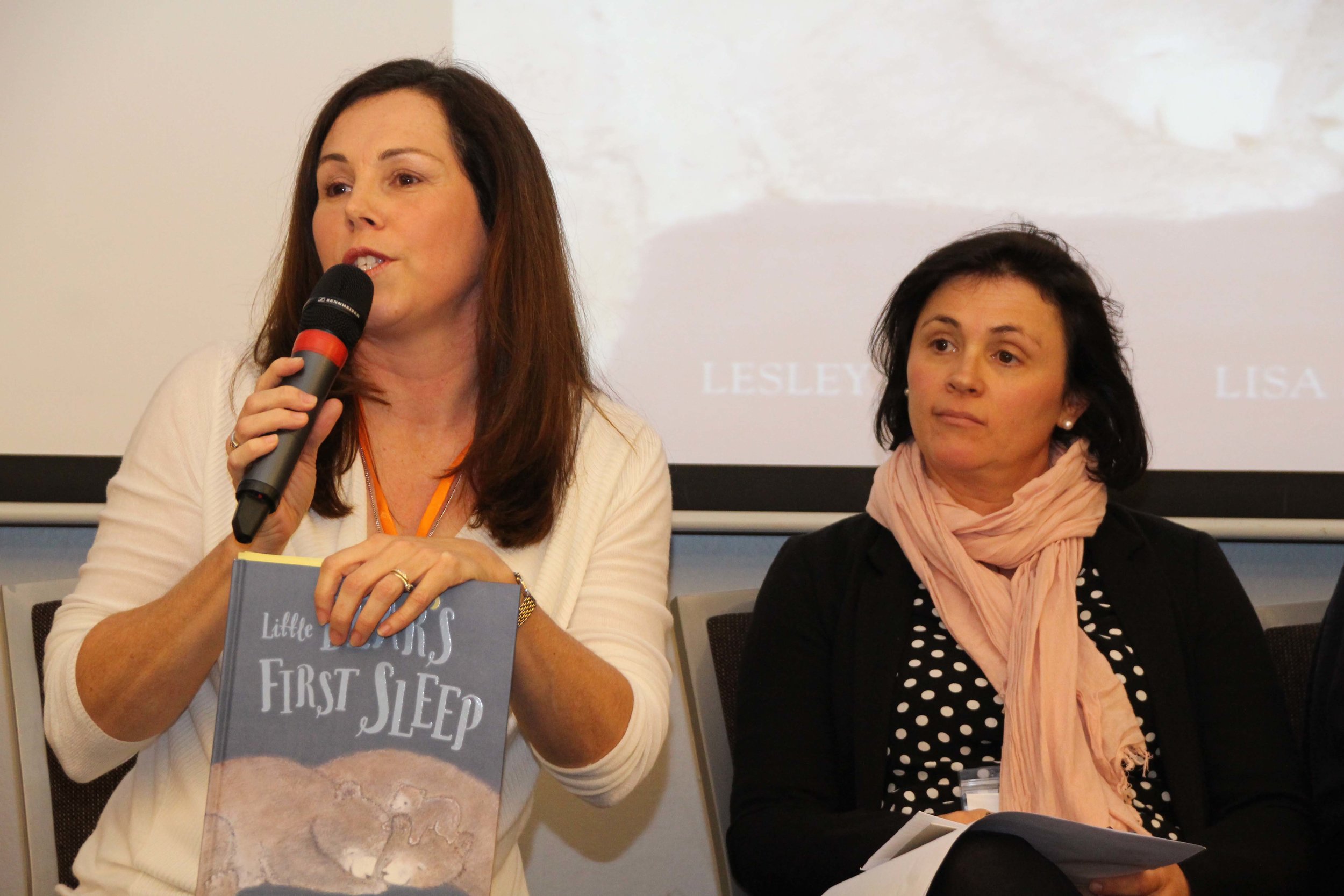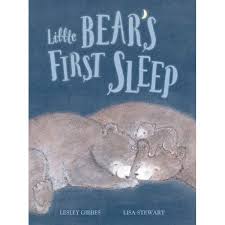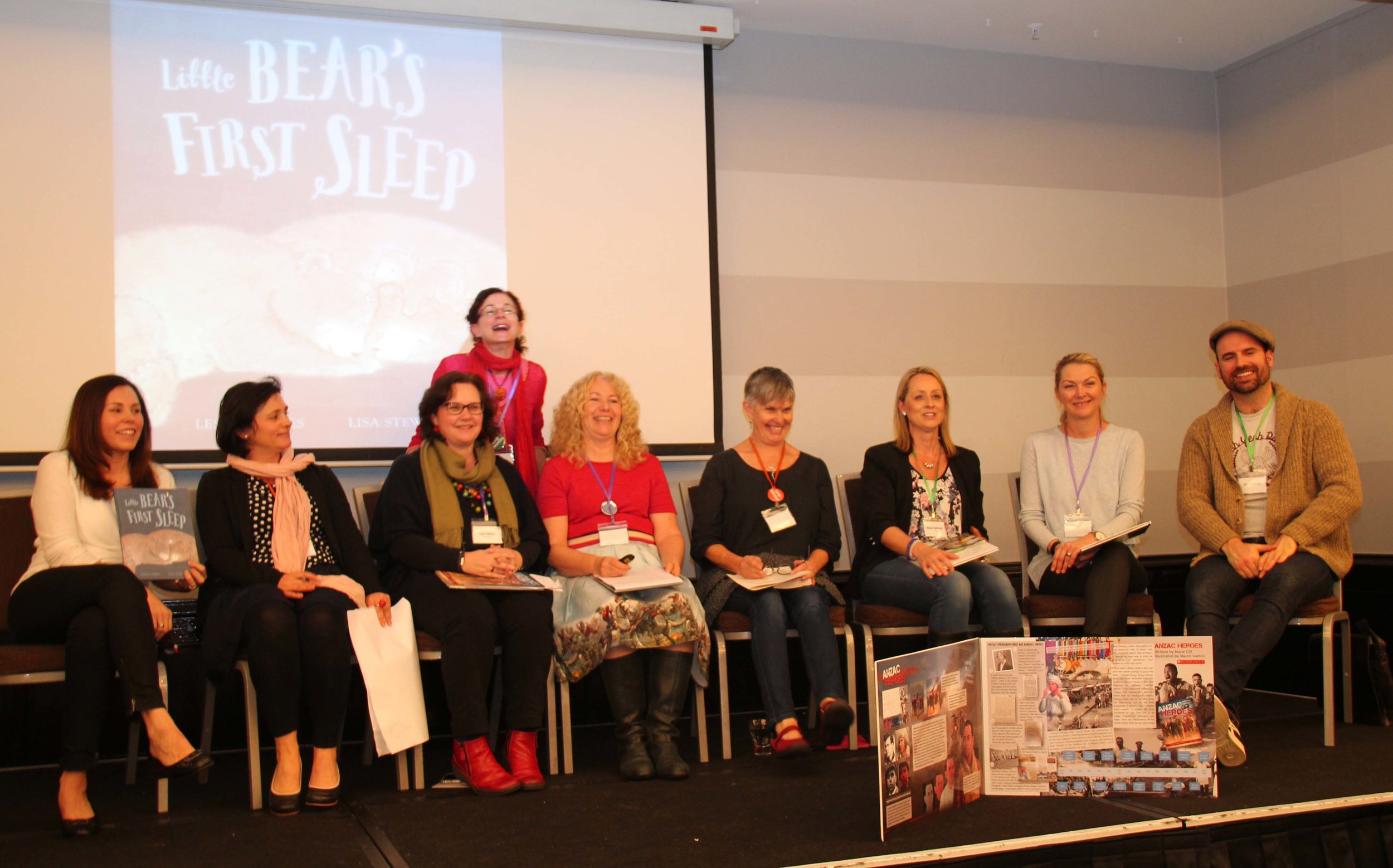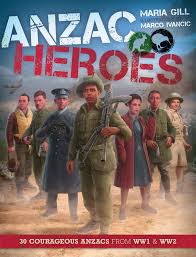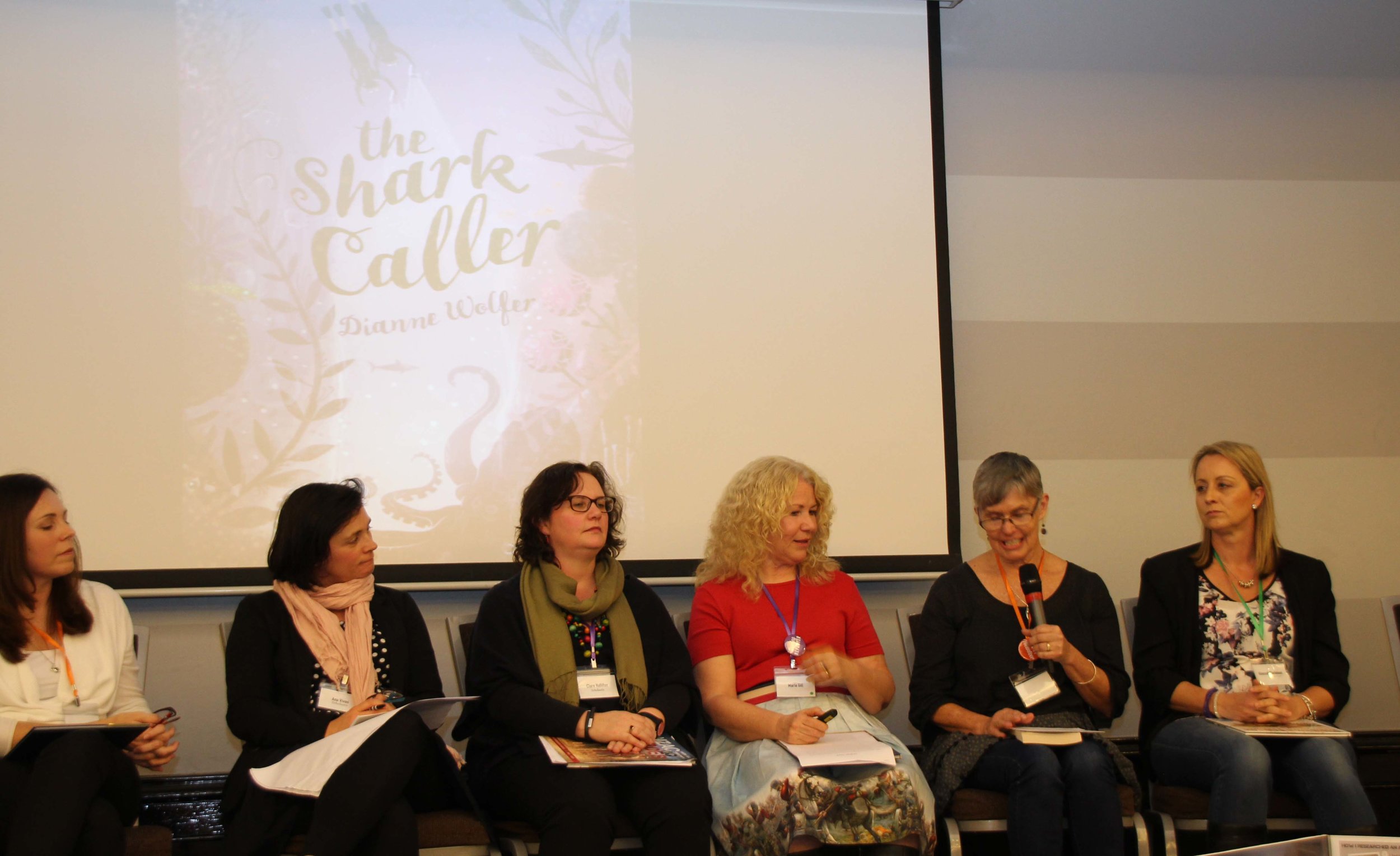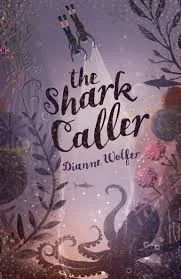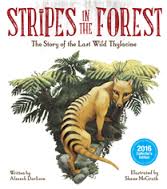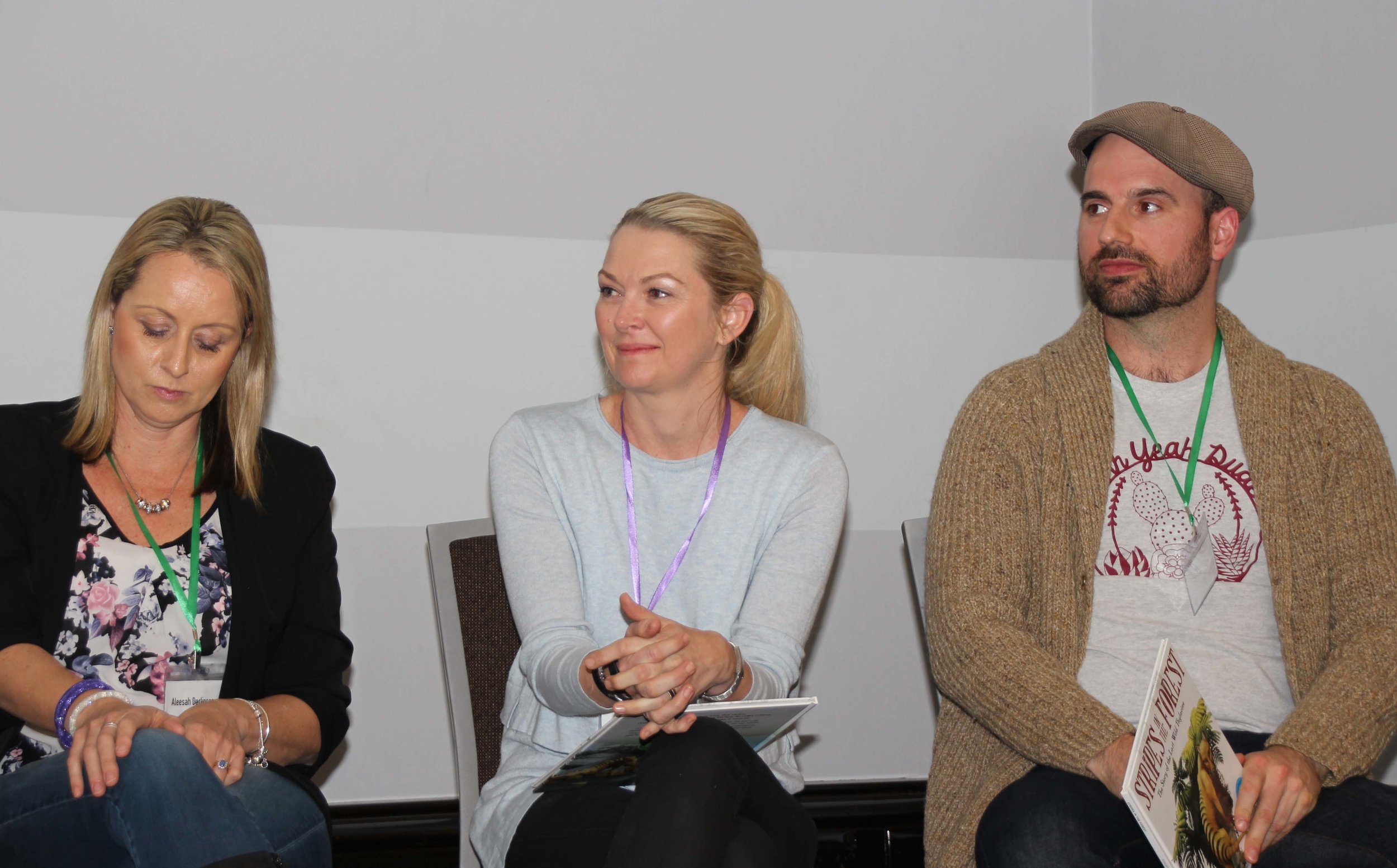Pairs of publishers and authors (+ one illustrator!) offering insight into the book creating process.
Dynamic Duos, vibrantly hosted by Deb Abela, was a conversational panel about the importance of collaboration in creating a children’s book.
Author Lesley Gibbes and publisher, Ana Vivas (Scholastic) were first-up, chatting about the highly successful picture book, ‘Little Bear’s First Sleep’. This is a gentle bedtime story about a bear cub embarking on his first long winter sleep.
Early on in the acquisition process Lesley and Ana agreed that the warm and soft drawings of illustrator Lisa Stewart would be the perfect complement for Little Bears story.
The collaboration on this book took an interesting turn when Ana recognised that the gloominess of the cave setting left little scope for Lisa’s illustrations.
In response to Ana’s concerns Lesley rewrote the text to include moonlight and snow allowing Lisa to use more white in her illustrations. The designer also worked to maximise the contrast of lighter areas while still keeping the soft feel of the book by setting light vignettes against dark pages.
From bedtime to wartime New Zealand author, Maria Gill and Clare Hallifax (Scholastic) had a very different book project with, ‘Anzac Heroes’. This is a highly awarded non-fiction text covering 30 Anzac heroes from WW1 and WW11.
Maria’s book tells the stories of individual soldiers, sailors, airmen, spies and medics. She was keen to highlight not only well-known servicemen but some of the lesser recognised figures of the world wars including women and indigenous peoples. She talked with admiration about the subjects of her book in particular the daring Nancy Wake (the white mouse) who worked as a spy and guerrilla fighter behind enemy lines in WW11.
Clare of Scholastic was on board with Maria’s concept from the start. She could see its value in tying in with WW1 100 year commemorations and as a needed educational resource.
‘Anzac heroes’ required painstaking and far-reaching research of primary and secondary sources. Maria spent many hours in the war memorial viewing military records, talked to RSL representatives and to the families of the heroes.
What is striking about this book is the mastery of design. The main body of text is complemented by fascinating facts and snippets in coloured boxes. Each double page hero spread is decorated with illustrations, beautiful digitally enhanced photos, icons, pictures of military awards, documents, letters and timelines. Although there were no designers on the panel. It was acknowledged that the designer had a vital role in bringing all the elements together.
Dianne Wolfer was next up discussing her latest book ‘Shark Caller’. Unfortunately, her publisher Zoe Walton (Penguin Random House) could not attend.
Dianne had an interesting story to tell about this book’s road to publication.
Dianne had long held a fascination with the underwater world and the culture of the peoples of Papua New Guinea due to her holidays spent diving and snorkelling in that region. She began to write a YA novel about shark calling, a ritual imbued with spirituality practiced by the indigenous people of the New Ireland Province of PNG. However, Dianne’s writing stalled, finding the blend of fact and fantasy required for the story difficult to negotiate and outside her usual genre.
Some years later, while studying for her PhD on the topic of anthropomorphism Dianne decided to take up the story again, completing the novel to form part of her thesis. Dianne still had relatives who lived in New Guinea who she could contact to ask for advice on aspects of the indigenous language and culture.
During this time Dianne attended a writers retreat on Rottnest island. Zoe Walton from Penguin Random House was in attendance. ‘Shark Caller’ seemed like a good fit for Zoe’s stated interests so after the retreat Dianne sent her manuscript to Zoe who quickly championed it. Dianne said that the editorial process at Penguin Random House was quite painless as advice was always given in a considered and gentle manner. Within a year of the Rottnest retreat ‘The Shark Caller’ was on the shelves.
The final panel members were Sharon Evans (Big Sky Publishing), Aleesah Darlison and Shane McGrath - not a dynamic duo, but a terrific trio. They collaborated to create the poignant picture book about the last wild thylacine titled, ‘Stripes in the Forest’.
Aleesah’s childhood growing up on a remote bush property inspired her love of native animals and wild landscapes. ‘Stripes in the Forest’ is written from the first person POV of a thylacine mother lending intimacy and emotional impact to the text. Although the story has an ecological message and deals with the likely extinction of a species. Aleesah said she was careful to write a hopeful ending. Is the thylacine still out there somewhere?
It was evident that Sharon, the publisher was as passionate about this project as Aleesah. She was excited to acquire the book and procure Shane McGrath to do the illustrations.
Shane McGrath didn’t just rely on Aleesah’s text to create the illustrations he was meticulous in his research of the thylacine’s appearance and behaviours. He was also careful to ensure the man-made structures such as buildings and ships were accurate for the time periods spanned in Aleesah’s story.
Shane used a combination of manual pencil drawings and digital photoshop to create the pictures
‘Stripes in the Forest’ was clearly a project of passion for author, publisher and illustrator.
This panel gave us an insight into the passion, dedication and meticulous care that goes into making a beautiful book. From the author to the publisher and illustrator to the designer – all are invested in making the book the best it can be.
Leigh Roswen Roving Reporter
#SCBWISyd


